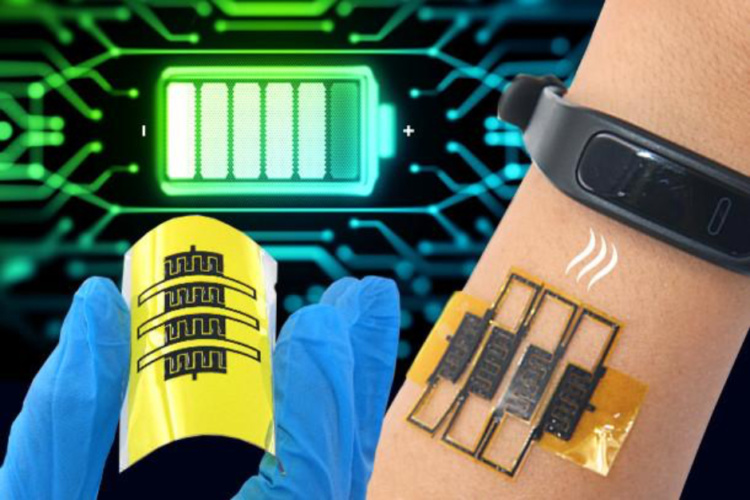
According to the research team led by Huanyu ‘Larry’ Cheng, Dorothy Quiggle career development professor in Penn State’s Department of Engineering Science and Mechanics, the use of micro-supercapacitors can enable a ‘stretchable’, self-powered system for use in health-monitoring devices without the ‘shortcomings’ of current batteries and supercapacitors such as low energy density and limited stretchability.
“While working on gas sensors and other wearable devices, we always need to combine these devices with a battery for powering,” said Cheng. “Using micro-supercapacitors gives us the ability to self-power the sensor without the need for a battery.”
Micro-supercapacitors are energy storage devices that can complement or replace lithium-ion batteries, with a small footprint, high power density and the ability to charge and discharge quickly. Cheng noted that when fabricated for wearable devices, conventional micro-supercapacitors have a stacked geometry displaying poor flexibility, long ion diffusion distances and a complex integration process.
Triboelectric nanogenerator points to power for wearable devices
'Electronic skin' is recyclable alternative to wearable devices
This led the team - comprising members from Penn State, US, and Minjiang University and Nanjing University, China - to explore alternative device architectures and integration processes.
Their results, recently published in Nano Energy, suggested that arranging micro-supercapacitor cells in a ‘serpentine’, island-bridge layout allows the configuration to stretch and bend at the bridges, while reducing deformation of the micro-supercapacitors. When combined, the structure comes what the researchers refer to as ‘micro-supercapacitors arrays’.
Cheng explained that the island-bridge design was able to achieve adjustable voltage outputs, and allowed for the system to be ‘reversibly stretched up to 100 per cent.’
By using non-layered, ultra-thin zinc-phosphorus nanosheets and 3D laser-induced graphene foam (a highly porous, self-heating nanomaterial) to conduct the design of the cells, the team saw ‘drastic improvements’ in electric conductivity and the number of absorbed charged ions.
Researchers are also said to have integrated the system with a triboelectric nanogenerator, an emerging technology that converts mechanical movement to electrical energy.
“When we have this wireless charging module that’s based on the triboelectric nanogenerator, we can harvest energy based on motion, such as bending your elbow or breathing and speaking,” Cheng said. “We are able to use these everyday human motions to charge the micro-supercapacitors.”




Swiss geoengineering start-up targets methane removal
No mention whatsoever about the effect of increased methane levels/iron chloride in the ocean on the pH and chemical properties of the ocean - are we...